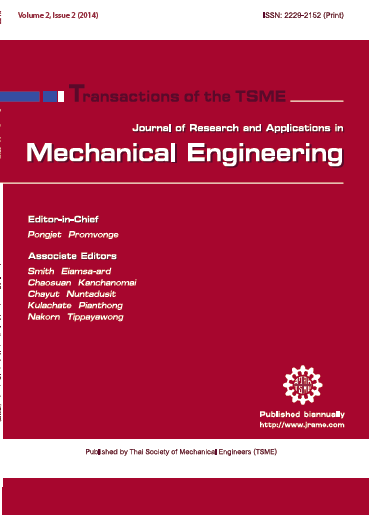Simulation of a transitional compressible jet
Main Article Content
Abstract
The numerical simulation was conducted to investigate the flow structures, mechanism of a transitional compressible jet, and the influence of upstream boundary layer thickness on the flow features. Initially, the jet flow has been performed using the mixed boundary condition, the first vanishing derivative and constant pressure at infinity. It seems to be physical because the flow leaves to where constant ambient pressure exits. However, the computation results shown that this condition is the cause of the pressure wave radiation as portrayed in Fig. 1a. There is the reflection from specifying constant pressure. This boundary condition does not allow the wave across the domain as shown Fig. 1b. After the wave reached the lateral boundary, the properties of fluid at the exit boundary should be changed and not remained constant. With applying the soft boundary condition (Taylor’s series formulation and characteristic wave relation) the wave, propagating from inlet, can pass through the domain exit without reflection (Fig. 1c). Figure 2 shows low and high pressure wave reflection, generated from the whirling flow structures and the interaction regimes between two structures, which bring on the peculiar pressure distribution.
Article Details
This work is licensed under a Creative Commons Attribution-NonCommercial-ShareAlike 4.0 International License.



